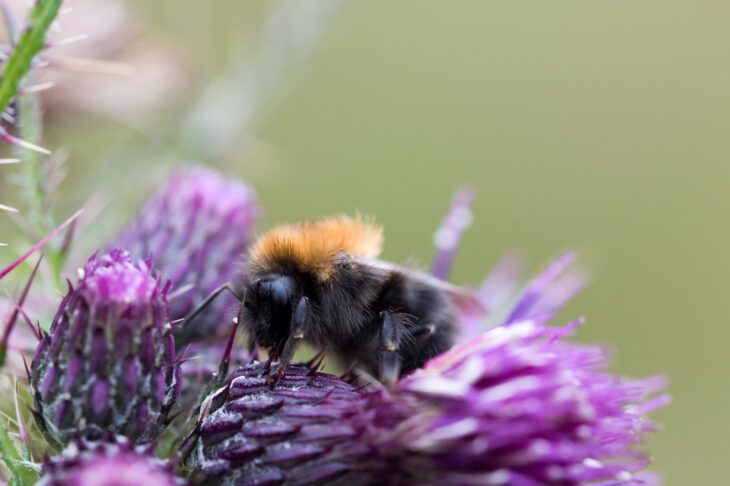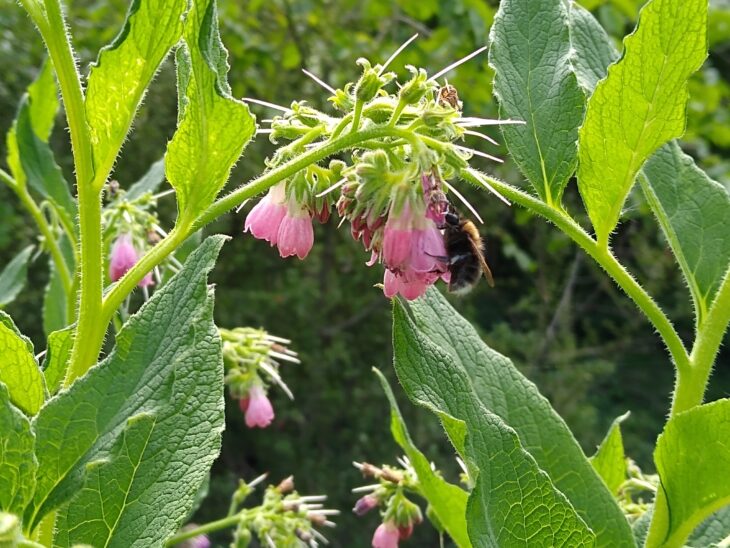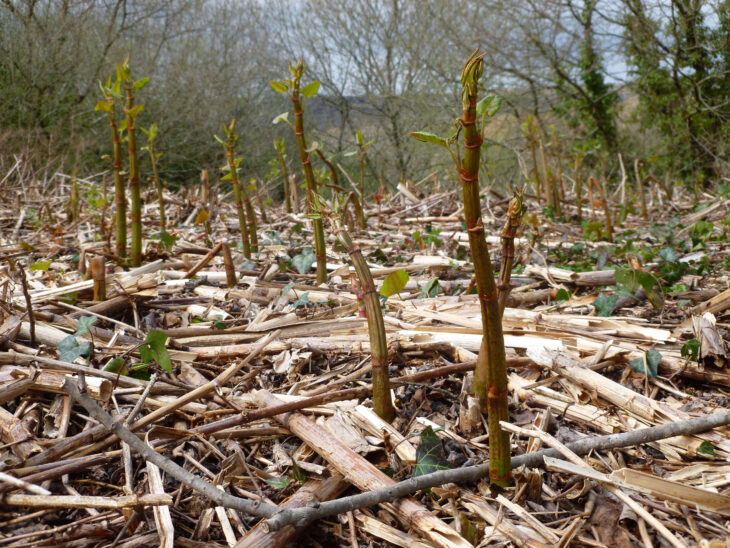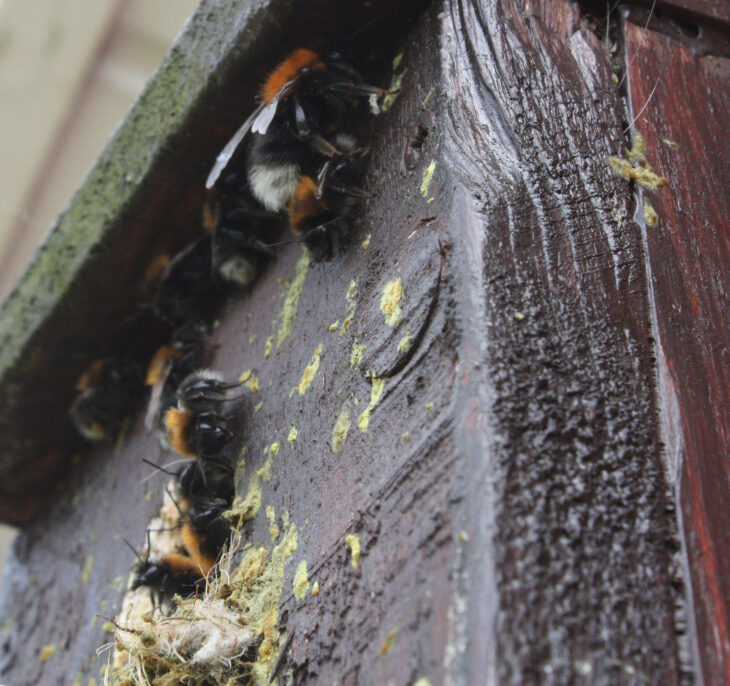Tree bumblebees have the Falls of Clyde buzzing
This week is Bees’ Needs Week. To mark the occasion, seasonal ranger Patrick Endall takes a closer look at one of Falls of Clyde’s newer residents: the tree bumblebee.
At this time of year, the woods, riverbanks and meadows at the Falls of Clyde are awash with wildflowers: frothy meadowsweet, majestic foxgloves, pink campion and tangles of vetch abound. The colours and smells tell the story of high summer in southern Scotland.
We mainly have insects to thank for this seasonal display, and bees – especially bumblebees – are some of the most visible if you take a closer look among the greenery. When you picture a bumblebee, you might imagine something quite generic, but in fact there are lots of different bee species with their own feeding habitats, nesting places, annual cycles, sizes and colours.
This variation – not just in bees but in all living things – is vitally important, because it helps protect against ecological collapse. If all bees were the same, a single disease strain could wipe out the whole population. Similarly, if all bees needed a particular plant to feed on and one year that plant failed to grow for some reason, the consequences would be disastrous. In essence, the more diversity we have, the better.
With this in mind, let’s take a look at one of the more recent bees to make the UK its home: the tree bumblebee (Bombus hypnorum).

Compared with other resident bee species, they are pretty unmistakeable with their handsome tawny brown thorax, black abdomen and white tail. There are simply no others like it.
Tree bumblebees arrived from continental Europe in 2001, being first recorded down in Wiltshire. Gradually expanding its range north and westward, colonies have now been with us in southern Scotland since 2013, and a walk around the Clyde Valley reserves in late spring and summer will show you just how well-established they have become. I regularly see them during reserve patrols, particularly on open or downward-facing flowers such as comfrey, where they often congregate in significant numbers.

Could these numbers be a problem? When a non-native species arrives and does well in a new environment, there is often concern that they will have a detrimental impact on the wildlife that was already there. This is certainly true of certain creatures, such as the Asian hornet (Vespa velutina), which is a dangerously effective predator of honey bees and other insects, or plants such as Japanese knotweed (Fallopia japonica), which grows so vigorously that it suppresses the plants around it and is very difficult to eradicate.

Thankfully, tree bumblebees don’t appear to be a threat to the UK’s wildlife. On the contrary, their presence may be quite beneficial: they have proven to be highly active, busy pollinators of a wide variety of plants, and they tend to build their colonies in places other bees typically don’t. These include holes in trees (hence the name) and human structures such as barns or roof spaces. They are also fond of using bird boxes containing abandoned nests. While you might be a bit sad if you find a colony has moved in to one you have put out for birds, bear with them! Watching these bees going about their business can also be a real pleasure.

The tree bumblebee’s year tends to wind down by the end of the July, with newly-mated queens building up their reserves before looking for somewhere to lay low for the winter, ready to start all over again in the spring. So get out and spot them while you can!
Patrick Endall, Falls of Clyde Seasonal Ranger
Help protect Scotland’s wildlife
Our work to save Scotland’s wildlife is made possible thanks to the generosity of our members and supporters.
Join today from just £3 a month to help protect the species you love.
Preface
This week is Bees’ Needs Week. To mark the occasion, seasonal ranger Patrick Endall takes a closer look at one of Falls of Clyde’s newer residents: the tree bumblebee. …
